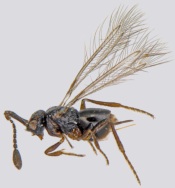 Fig 1. Female, lateral view |
 Fig 2. Female, lateral view |
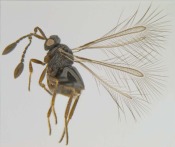 Fig 3. Female, lateral view |
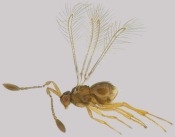 Fig 4. Female, lateral view |
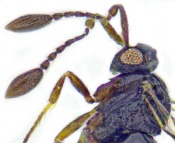 Fig 5. Sculptured mesosoma |
 Fig 6. Female, lateral view |
 Fig 7. Antenna |
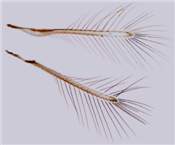 Fig 8. Wings |
Ramesh Kumar et al., 2013
Nomenclature
Litus Haliday, 1833: 269, 345. Type species Litus cynipseus Haliday 1833, by designation of Gahan & Fagan, 1923: 81.
Neolitus Ogloblin, 1935: 60. Type species Neolitus argentines Ogloblin, 1935, by original designation. Synonymy by Triapitsyn & Berezovskiy, 2004: 3.
Diagnosis
The genus Litus can be distinguished by the following characters:
- Antenna (Fig. 7) with 6-segmented funicle
- Mesoscutum, postscutellum and propodeum (Fig. 5) strongly sculptured
- Gaster broadly joined to propodeum, petiole indistinct, apparently almost as wide as propodeal apex or gaster, much shorter than wide, ring-like
- Mesophragma projecting into gaster
- Tarsi 5-segmented
Geographic Distribution
Palaearctic, Nearctic, Neotropical, and Oriental regions, including India.
View Distribution of Litus in India in a larger map
Hosts and habitat
Not known.
Species in India
1. huberi Rehmat & Anis, 2009 (original description) (Distribution: Assam)
2. triapitsyni Rehmat & Hayat, 2009 (original description) (Distribution: Assam)
References
Rehmat, T, Anis, SB and Hayat, M. 2009. Record of the genus Litus Haliday (Hymenoptera: Chalcidoidea: Mymaridae) from India, with description of two species. Journal of Threatened Taxa, 1(7): 370-374.